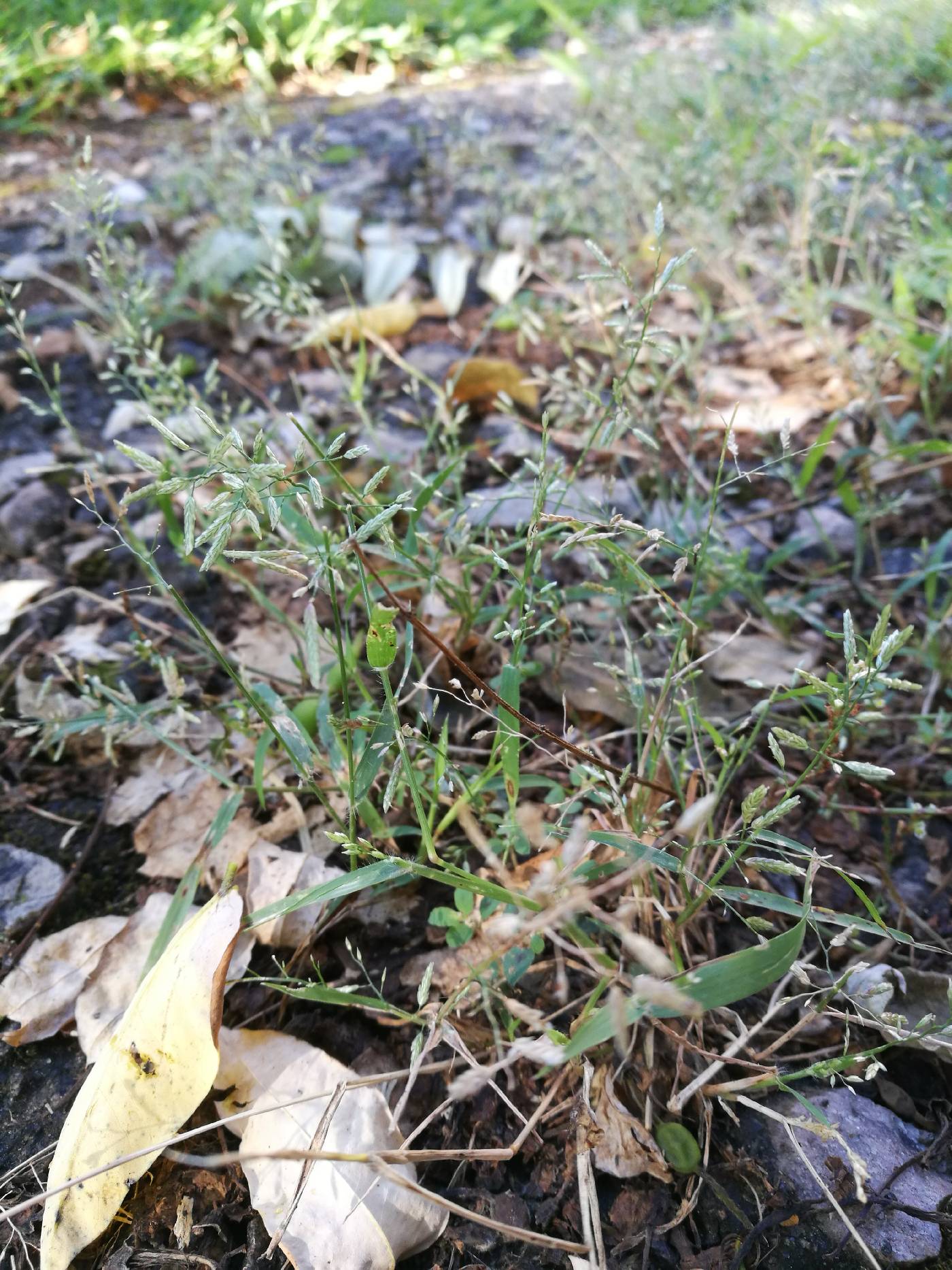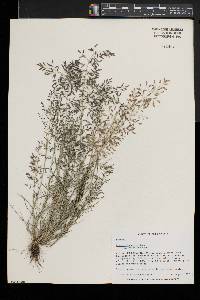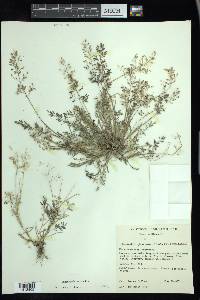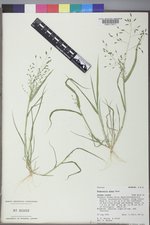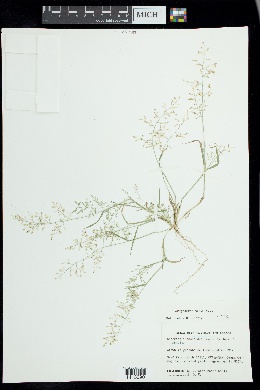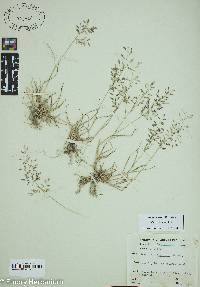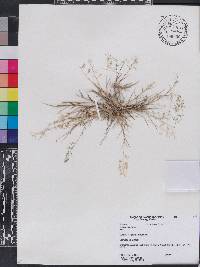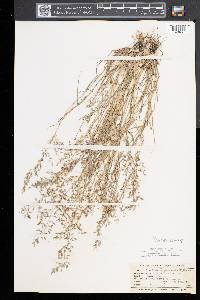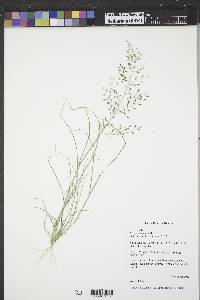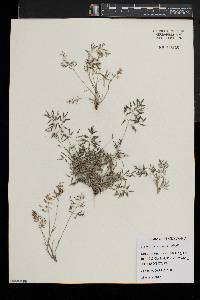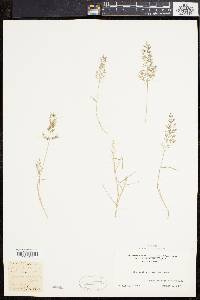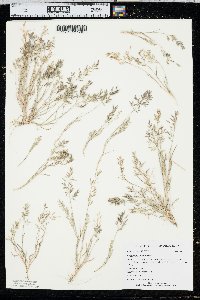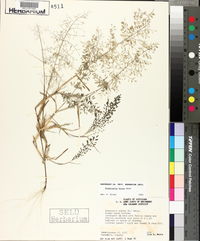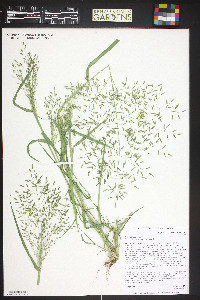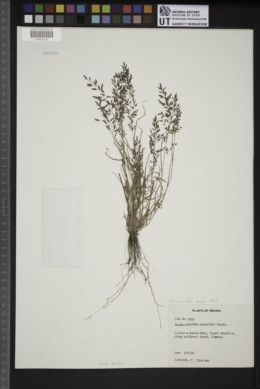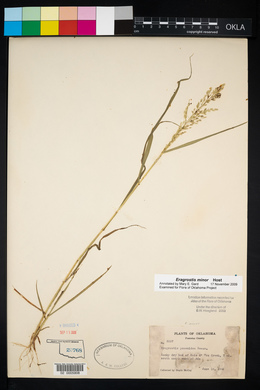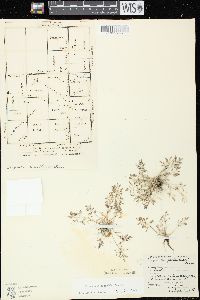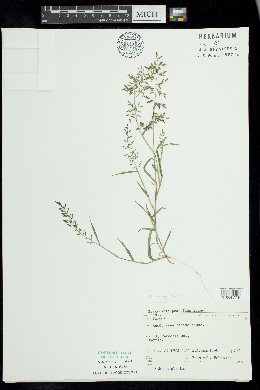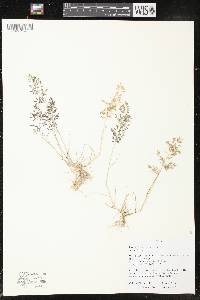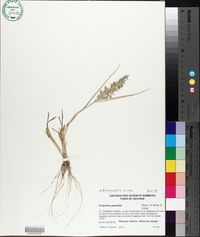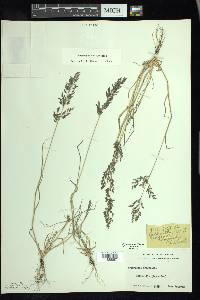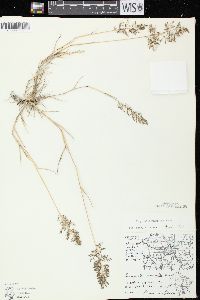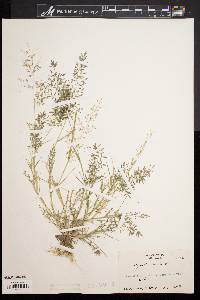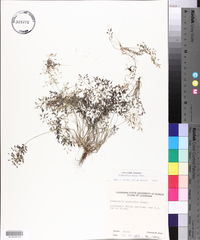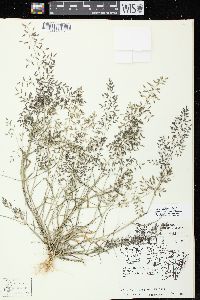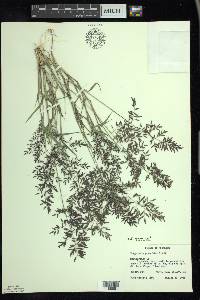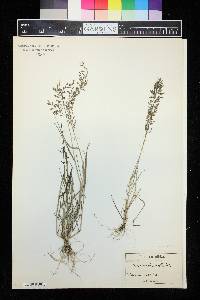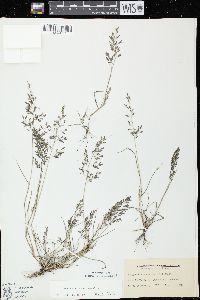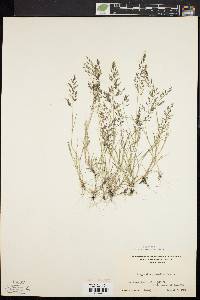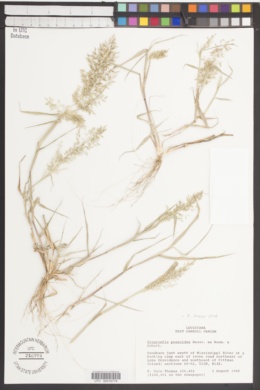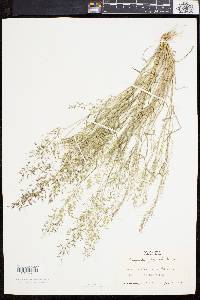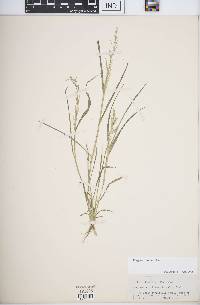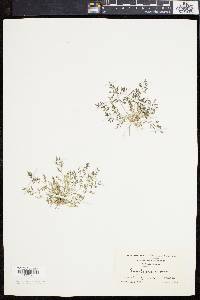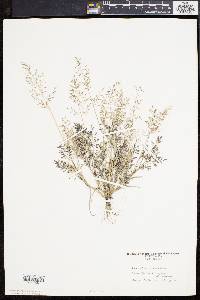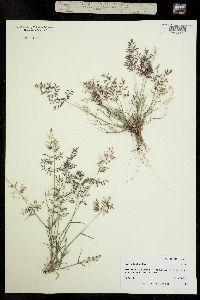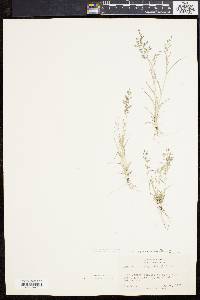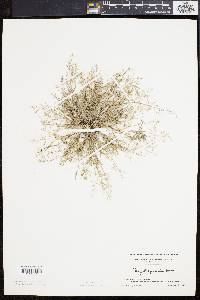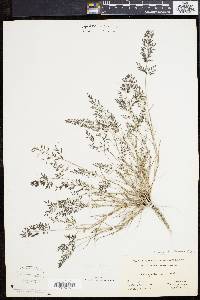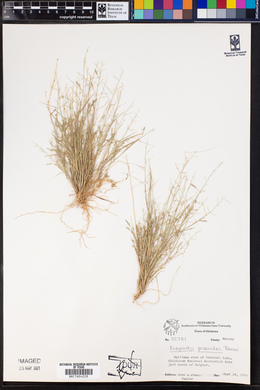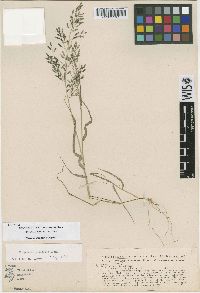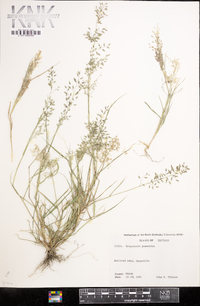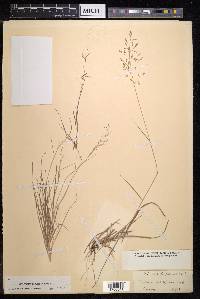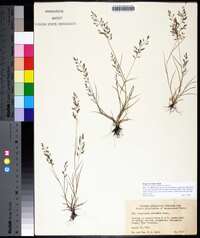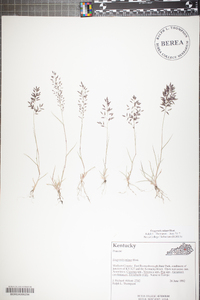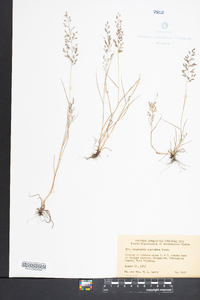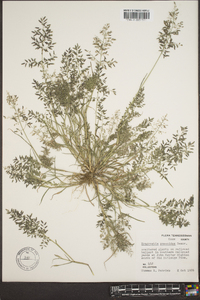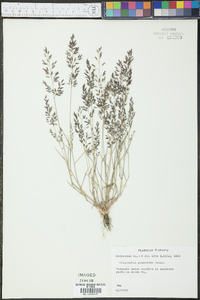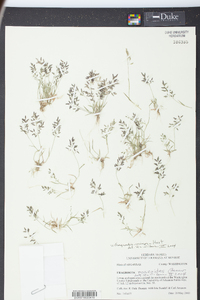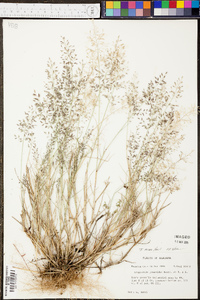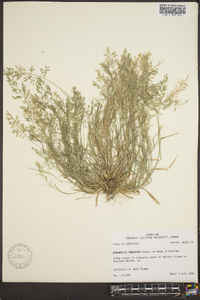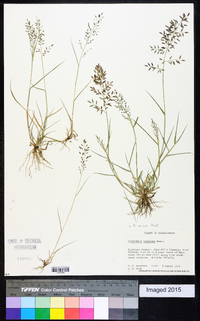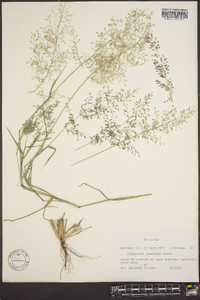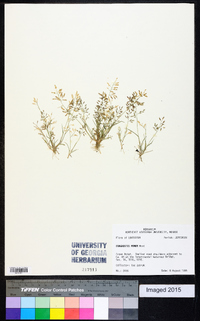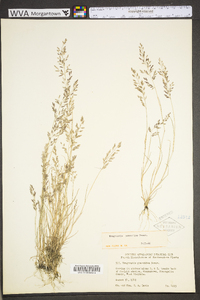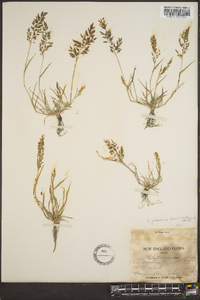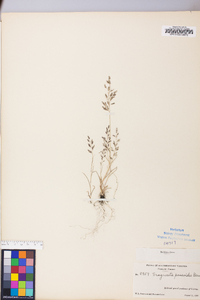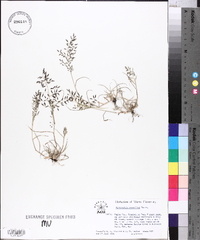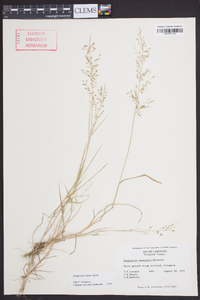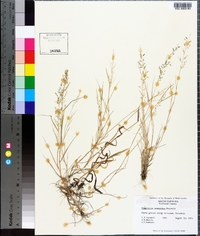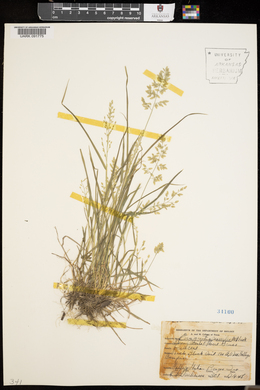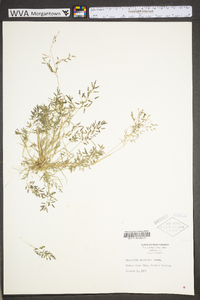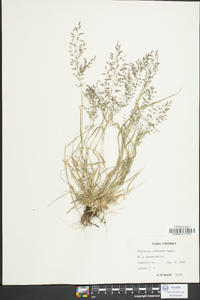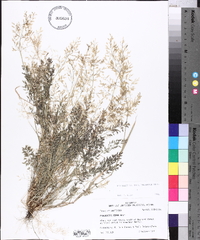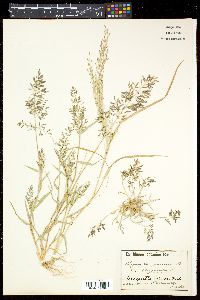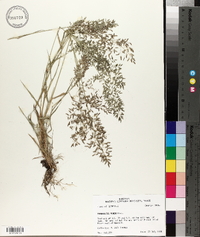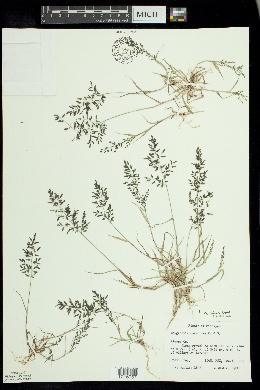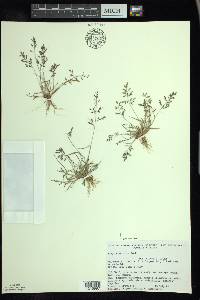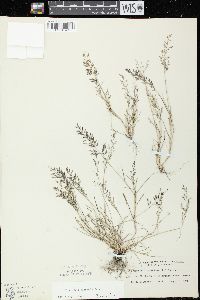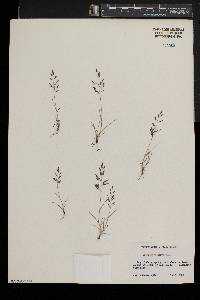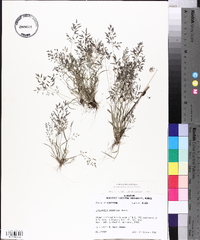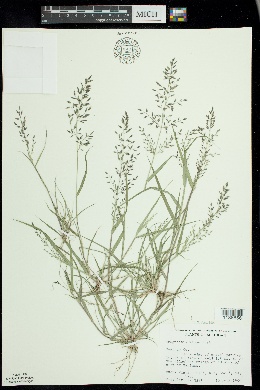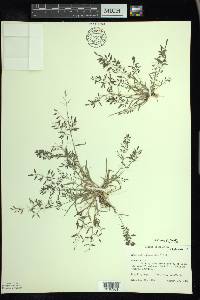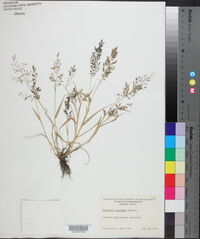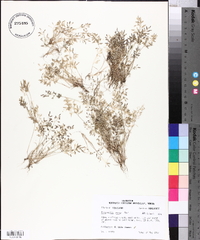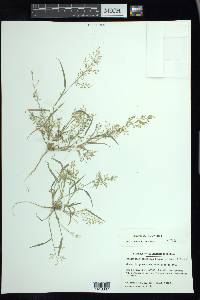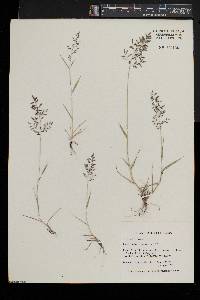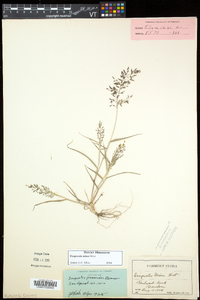Eragrostis minor
|
|
|
|
Family: Poaceae
Little Love Grass, more...little lovegrass (fr: Éragrostide Faux-Pâturin)
[Eragrostis botterii E. Fourn., moreEragrostis eragrostis (L.) P.Beauv., Eragrostis eragrostis var. microstachya (Coss. & Germ.) Farw., Eragrostis multiflora var. pappiana Chiov., Eragrostis pappiana (Chiov.) Chiov., Eragrostis pilosa var. minor (Host) Kuntze, Eragrostis poaeoides P.Beauv., Eragrostis poaeoides var. laxiflora Döll, Eragrostis poiformis Link, Eragrostis suaveolens Becker ex Claus, Eragrostis vulgaris Coss. & Germ., Eragrostis vulgaris subsp. poaeoides (P. Beauv. ex Roem. & Schult.) R.C.V. Douin, Eragrostis vulgaris var. microstachya Coss. & Germ.] |
Eragrostis minor is a European species that now grows in gravelly roadsides and disturbed sites, especially near railroad yards, at 20-1600 m in southern Canada and the contiguous United States. Annual tufted herb 10 cm - 0.65 m tall Leaves: with open sheaths that are occasionally glandular on the midveins and hairy (to 4 mm long) at the tips, and 0.2 - 0.5 mm long ligules with hairs along the margins. The blades are 1.5 - 10 cm long, 1 - 4 mm wide, flat, hairless or with sparse white hairs, with margins sometimes having saucer-shaped glands. Inflorescence: terminal, branched (panicle), rising above upper leaves, 4 - 20 cm long, 2.2 - 10 cm wide, egg-shaped, sometimes glandular-spotted or pitted (rarely a ring) below the nodes of the main axis, with often dull greenish gray to tan glands and 0.5 - 6 cm long primary branches. Fruit: a light brown caryopsis, 0.4 - 0.7 mm long, elliptic, longitudinally lined but not grooved. Culm: 10 - 45 cm long, erect to decumbent, occasionally with a ring of glands beneath the nodes. Spikelets: on a stiff, straight stalk 1 - 4 mm long and often with a distal ring of saucer-shaped glands, reddish purple to greenish or sometimes grayish, 4 - 11 mm long, 1.1 - 2.2 mm wide, narrow egg-shaped, laterally compressed. Glumes: broad egg-shaped, membranous, single-veined, neither lobed nor awned, with the lower glume 0.9 - 1.4 mm long and the upper glume 1.2 - 1.6 mm long. Florets: seven to twenty per spikelet, with two reddish brown anthers 0.2 - 0.3 mm long. Lemma: 1.4 - 1.8 mm long, broad egg-shaped with a pointed to blunt tip, membranous, usually hairless, with longitudinal ridges that may have one or two saucer-shaped glands. Palea: transparent, 1.3 - 1.7 mm long, with a blunt to pointed tip and two smooth or minutely rough longitudinal ridges. Similar species: Eragrostis cilianensis, Eragrostis frankii, Eragrostis minor, Eragrostis pectinacea, and Eragrostis pilosa are annuals that lack grooved caryopses (E. frankii sometimes has a shallow groove). Eragrostis cilianensis has wider (2 - 4 mm) and longer spikelets (6 - 20 mm), ten to 40 florets, and three yellow anthers. Eragrostis frankii only has three to six florets, E. pectinacea is always non-glandular and has three purplish anthers, and Eragrostis pilosa has narrower (0.6 - 1.4 mm) spikelets and three purplish anthers. Flowering: late June to mid September Habitat and ecology: Introduced from Europe, this species grows well in cindery ground and is very common along railroad tracks. Occurence in the Chicago region: non-native Etymology: Eragrostis is derived from the name of the Greek god of love, Eros, and agrostis, meaning grass. Minor means smaller. Author: The Morton Arboretum Much like no. 6 [Eragrostis cilianensis (All.) Janch.], glandular-warty on the lf-margins and to some extent elsewhere, but the lemmas without glands; sheaths usually pilose on the margins, sometimes also on the back, as well as at the summit; axils of the panicle-branches glabrous; spikelets more slender, 4-11 נ1.5-2 mm, 5-12(-20)-fld, the lemmas 1.5-2 mm; 2n=40, 80. Native of Europe, intr. in moist soil, waste land, gardens, and roadsides from N.S. and Vt. to Wis. and Io., s. to Ga., Tex., and Calif. (E. poaeoides) Gleason, Henry A. & Cronquist, Arthur J. 1991. Manual of vascular plants of northeastern United States and adjacent Canada. lxxv + 910 pp. ©The New York Botanical Garden. All rights reserved. Used by permission. From Flora of Indiana (1940) by Charles C. Deam Indiana Coefficient of Conservatism: C = null, non-native Wetland Indicator Status: N/A |

